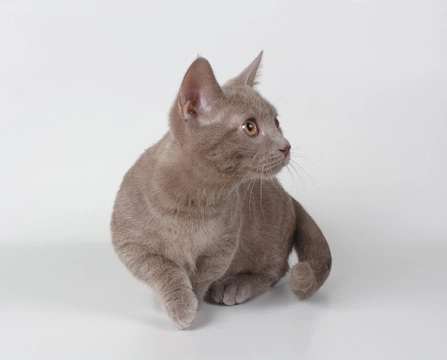
The Munchkin cat - an unusual breed!
The Munchkin cat breed is one that most cat owners are aware of, as they are so unusual! However, for this very same reason, many people will have never seen one in the flesh. The Munchkin is characterised by its small size, and legs that are dramatically shorter than those of most other types of cat. They actually got their name due to this factor, and were labelled as “Munchkins” after the short “Munchkin” characters in The Wizard of Oz! The Munchkin s a relatively new breed of cat, only beginning to be recognised by most feline breed registries worldwide from the mid 1990’s onwards, and the introduction and recognition of the breed in most countries was accompanied by a large amount of controversy and concern over the potential health and mobility issues associated with their particularly short legs.
If you are considering buying or adopting a Munchkin cat or kitten or are just interested in finding out more about this still rare and very unique breed of cat, this article will provide a basic introduction to the Munchkin cat.
More about the Munchkin
The Munchkin cat is renowned for its sweet and gentle nature, playful temperament and warm personality with people. They are lively and intelligent cats that enjoy being handled and petted.
The Munchkin breed came into existence due to cross breeding of cats of the Munchkin type with regular long legged domestic cats, and Munchkin cats are frequently out crossed with long legged cats in the present day as well. They are generally small in build as well as having short legs, although the dramatically shortened legs of the breed are the only part of the cat that is considered to be abnormally smaller than the norm. The back legs of the cat are slightly longer than the front, leading to their displaying a slight rise in their conformation from front to back. They are available in every coat colour and pattern combination, and may be either longhaired or shorthaired.
How did the breed come into being?
Cats naturally born with dramatically shortened legs have been reported in various countries since the 1940’s, but it was only during the 1980’s that deliberate attempts were made to breed a significant number of cats of this type and so, establish the breed. A pregnant cat was found and rescued in America in the early 1980’s, and her subsequent litter consisted of a variety of both long legged and short-legged kittens. This original queen that produced the short legged kittens and one of her subsequent short-legged male offspring became the founding cats of the establishment of the Munchkin breed.
Munchkin cat genetics
The short legged appearance of the Munchkin cat comes about due to a genetic mutation or abnormality. The gene that causes the legs to be shortened is considered to be a dominant gene, meaning that just one of the parent cats need to carry the gene to provide a reasonable chance of some or all of the subsequent litter also having short limbs. Indeed, it is usually preferred to breed a long legged cat with one carrying the short-legged gene rather than to breed two cats with short legs and the relevant gene, as litters produced from two parents containing the gene will result in a quarter of the subsequent embryos being unviable.
Health issues associated with Munchkin cats
Much of the general furore and debate over whether or not the Munchkin cat should be recognised as a breed by various breed registries came about as it was assumed that Munchkin cats were highly likely to be plagued by many of the same health issues faced by the Dachshund dog, or sausage dog, such as spinal problems. However, during the 1990’s, several prominent breeders in America had their Munchkin cats x-rayed and tested for spinal deformities and problems, and were not found to be suffering from any such issues.
Homozygous embryos such as those produced by two Munchkin cats when mated will lead to a number of the subsequent litter being unviable for life. A small number of cats of the breed have been found to suffer from a condition called lordosis, which causes the spine to be excessively curved, and also pectus excavatum or a hollowed chest has also been identified as occasionally present within the breed. However, both of these conditions can also occur in other breeds of cat, and no studies have been undertaken at time of writing to determine whether or not the Munchkin cat is particularly prone to these issues, or if they are unrelated to the shortened limbs of the breed.
Is the Munchkin cat recognised as a breed within the UK?
While Munchkin cats are bred and sold within the UK, the Governing Council of the Cat Fancy (GCCF) does not recognise the breed, and firmly states that it has no intention to consider doing so in the future. The GCCF considers the Munchkin’s shortened limbs to be a conformation defect that can adversely affect the cat’s quality of life, rather than a desirable trait that should be recognised and encouraged.
The breed registries of many other countries including the USA and Canada and the International Cat Association, do however recognise the Munchkin breed for showing and classification purposes.



